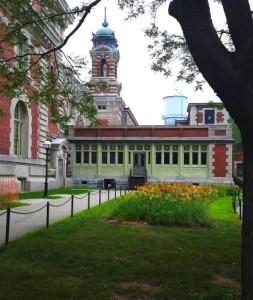So, with the aid of Librivox, I knocked out another three articles from this issue during my lunch hour on three consecutive days. I have since decided that my store is too noisy for me to really hear the articles to make this a worthwhile long-term plan. I’m going to try to continue to listen to the articles on LibriVox, only in a not-so-noisy environment. I am off this coming Wednesday, so while Alex is in school, I’m going to try to get some walking done on the Leon Creek Greenway. If I have sufficient time and energy to do so, I hope to listen to one article on the way out and another on the way back. On to the articles.
The Classification of Geographic Forms by Genesis, by W.J. McGee (no photographs, since this is 1888)
The Classification of Geographic Forms by Genesis is a stupor-inducing look at the state of geomorphology (the study of how forces affect the forms and structures of geographic features. In addition to lists of forces and their effects, we also get vague references to people (presumably men, since this is 1888) who were apparently well-known in geographic circles back in the 19th Century. Perhaps Lyell, Powell, Gilbert, Lesley, Richthofen, and Dana are prominent enough that today’s geographers will know the reference just by the surname, but McGee apparently thinks that his Victoria-era target audience should know these people, as we never get any more information than just the surnames and their opinions. Also, in the case of Richtofen (uncle of the “Red Baron,” from what I can tell), we get the German-language terms he used.
The Great Storm of March 11–14, 1888: A Summary of the Remarks Made by Brigadier-General A. W. Greely, Chief Signal Officer of the Army
The best thing I can say about this article is that at least it’s short. Greely talks about the path of the storm and lists lots of barometer pressure readings. From what I can tell, this storm, which hit the northeast between New Jersey and Boston. Over 400 people died and it is still one of the worst blizzards in United States history.
This article concludes with the confidence-inspiring sentence, “These remarks are necessarily imperfect, as my official duties have been such as to prevent any careful study or examination of the storm apart from that possible on the current weather maps of the Signal Service.” So that’s exciting.
The Great Storm Off the Atlantic Coast of the United States, March 11th–14th, 1888, by Everett Hayden
This article has more detail on the formation of the storm and the effects when the storm finally hit. The article actually does have illustrations, perhaps the first ones in the magazine’s history. Well, charts, at least, but they were in color. The presence of these charts made the LibriVox reading interesting because the references to the charts did me no good.
We’ll be back to 1888 perhaps on January 30, if I can get two more articles done on January 27. If not, I’ll go on to November 2015 on January 30. The weekend of January 30 is my weekend off and Alex’s weekend with his dad, so I’ll try to walk-and-listen my way through the second article sometime that weekend.

